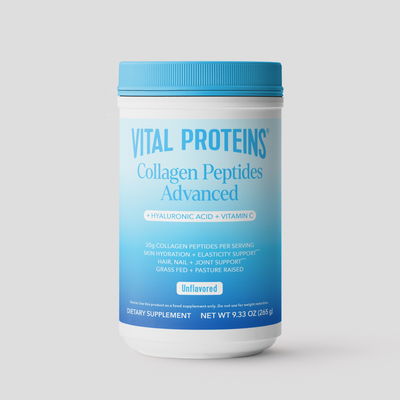By: Lisa Payne
Back in grade school, the “sit and reach” test defined how we measured flexibility. Thankfully, it has evolved, and the endgame is no longer whether or not you can touch your toes.
Mobility exercises have gone mainstream and look at how the entire body moves as a whole to achieve safe movement. But does that mean stretching has taken a back seat? Grab your Collagen Water (hydration is important!) and keep reading about mobility exercises vs stretching.
Mobility
After a long day of sitting, you likely feel stiff due to the lack of circulation and elastic feeling in your muscles and joints. Going directly into a deep stretch on cold muscles can risk injury and even shorten already tight muscles.
Rather than shock the body into stretching, mobility warms up muscles and joints and awakens the nervous system so that you can move throughout your entire range of motion more safely. It primes the body for the workout ahead. This prevents more dominant muscle groups from getting over-worked and allows under-worked muscles to turn on and stabilize the body.
RELATED: 10 Workout Essentials That Will Inspire You to Hit the Gym
Stretching
Don’t put away your stretching mat so fast. A well-rounded recovery plan combines both mobility and stretching together – but in the right way.
Classic stretching exercises include things like a side reach, straddle stretch or bringing an arm across your chest to stretch out the shoulder. Whether you’re an active person or not, maintaining the mobility of your body also includes stretching. However, it’s best to stretch after mobility or after a mobility warm-up and workout. Save 10-30 minutes post-workout to stretch.

How to Tell Them Apart
Lie on the floor with both knees bent, together and over to the side with your arms in a “T” position. This is a spinal twist stretch. It opens up the outer hip, obliques, chest, biceps, shoulder and spine.
For increased spinal mobility, lie on your side with knees together and arms outstretched in front of you with palms facing each other. Slowly open the top arm across and stop at the first sign of tightness. Close the arms and repeat. Allow the increased range of motion to come with repetition to teach your spine safer progressive movement.
Tension and muscle soreness restrict the blood flow to the body so that it can’t heal properly for muscle repair. Without mobility and stretching together and in the right way, you may limit the longevity of an active, healthy lifestyle.

















